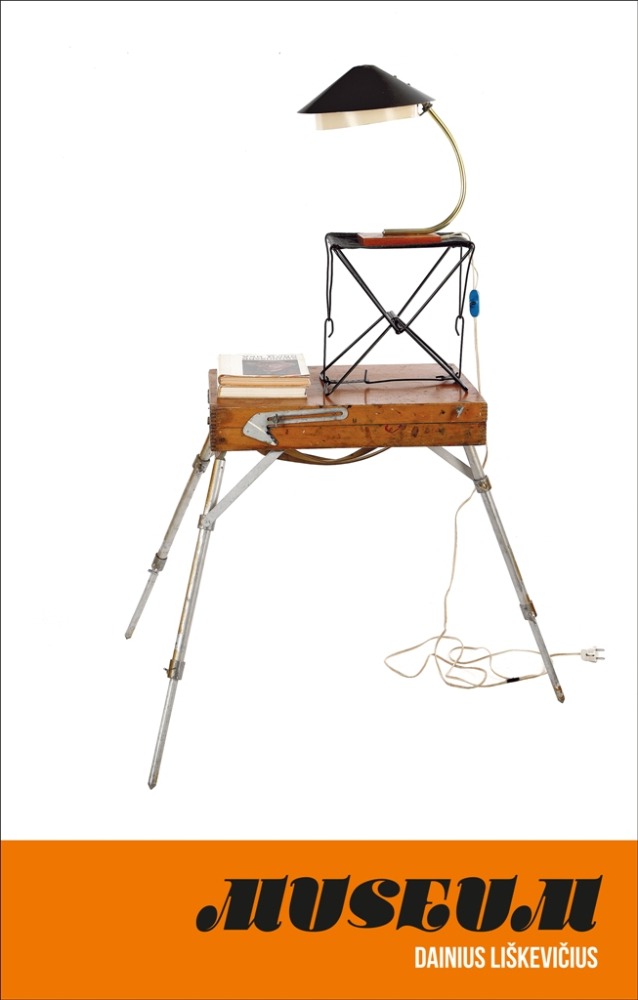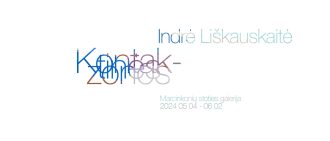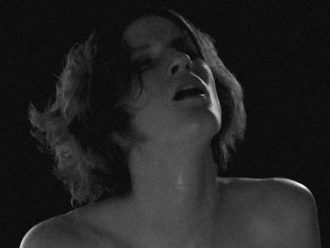
Dainius Liškevičius. The Monument made from an easel the artist Dainius Liškevičius bought while in the 7th year at school (~1982), a folding travel chair, a desk lamp left by a lodger in the artist’s house and two books: Henri Perruchot, The Life of Van Gogh (La vie de Van Gogh), Vilnius: Vaga, 1978 and Lionginas Šepetys, An Outline of Modernism. Analysis and Critique of the Main Tendencies, Vilnius: Vaga, 1982
7 May–30 September 2015
Vernissage: 6 May, 5pm with the artist’s performance
Open: Daily (except Tuesday), 10-6pm
Garden of the Palazzo Zenobio,
Fondamenta Soccorso,
Dorsoduro 2596,
Venice, Italy
Dainius Liškevičius’ project Museum is presentedin the Lithuanian Pavilion at the 56th International Art Exhibition – la Biennale di Venezia by Nida Art Colony of Vilnius Academy of Arts. The pavilion is organised by curator and commissioner dr. Vytautas Michelkevičius , 2nd commissioner Rasa Antanavičiūtė, producer Daina Pupkevičiūtė and the pavilion team.
Museum will be guided by Lithuanian-English (and sometimes Italian) speaking guides who will help the audience to discover intersecting multi-linear narratives in the exposition. The Museum is also complemented by a printed guide, souvenirs and special guided tours by curator and guests during the first opening week. The collateral event assembly “Rotten Dice” will invite the visitors to the garden on the 7th of May from 7 pm onwards.
Museum, which originated in 2012 as a black cube intervention in the Lithuanian National Gallery of Art in Vilnius, has arrived in Venice as an artist-created institution which can tell and do what ordinary museums cannot. The artist’s ways of storytelling and rhetoric simulate the phenomenon of a museum itself, with its rules and methods. In this way, a discursive space with overlapping subjective and objective interpretations of time is created. As the Lithuanian national pavilion, Museum seemingly alludes to the idea of the curator Okwui Enwezor that a national pavilion is “the most anachronistic exhibition model”. At the same time, it offers a relevant model of conduct for today’s world, full of national and geopolitical conflicts.
The multi-layered collection that has been put together by the artist works as an elliptical time loop. It simultaneously takes us back to the recent past, questions the present, and projects our anxieties on to a future that is full of cultural and geopolitical tensions. Museum is essentially a one-off piece of artistic research, but it is not only relevant in exploring the depths of the Soviet totalitarian regime. It is also a possible model for dealing with present-day hegemonic powers, and their impact on the public discourse and the freedom of the artist.
In his vision of Lithuanian (art) history, revamped with subtle irony, the artist offers an unexpected version of the archaeology of objects. Here, every object has both a personal and a collective history that conveys the signs of the times, and allows us to travel in time. Within the space of Museum, Liškevičius’ own life story intertwines with those of dissident revolutionaries and idealised cultural figures (such as Jean-Paul Sartre), further erasing the thin line between subjective and objective forms of storytelling.
Dainius Liškevičius (born 1970 in Kaunas, lives and works in Vilnius) is one of the most prominent Lithuanian artists, who started his artistic career with Lithuania’s independence. With the incredible socio-political changes since 1990, his creative work has evolved through very different media and styles. Performativity and the fluctuating identity of the artist, both as a theme and as a form, are among the main keywords describing his work. The artist studied sculpture and later postgraduate studies (a type of PhD) at Vilnius Academy of Arts, and is an active participant in national and international shows.
Vilnius Academy of Arts is the only university-level state institution (with ~2000 students) for higher education in art in Lithuania. The Nida Art Colony is a department of Vilnius Academy of Art, and runs residencies (50 artists per year) and educational and art production programmes in the resort town of Nida on the coast of the Baltic Sea.
























